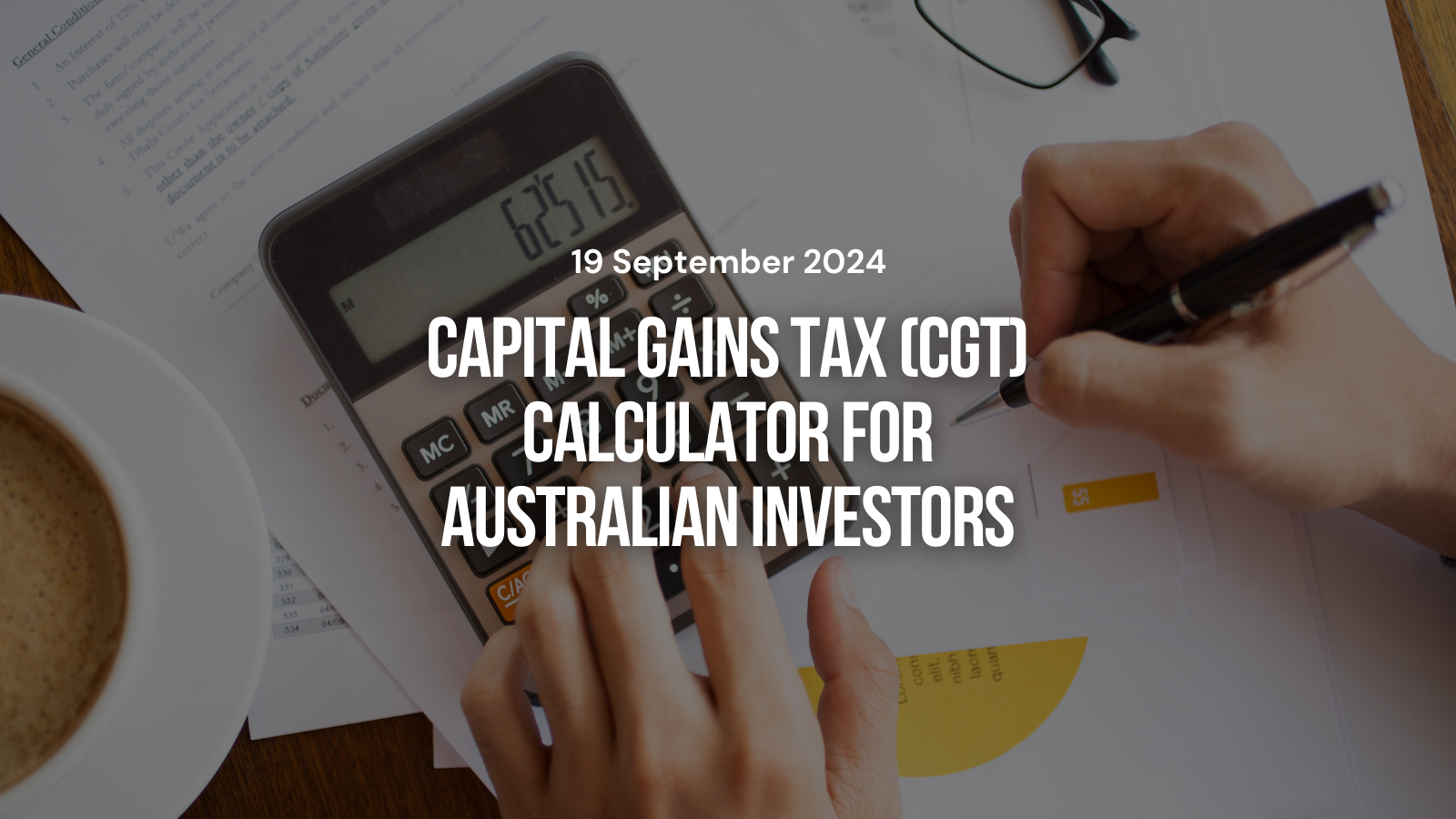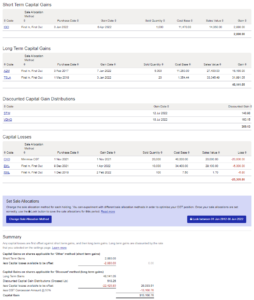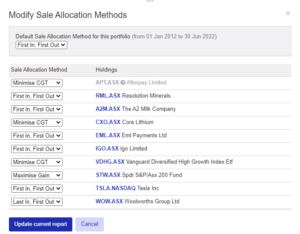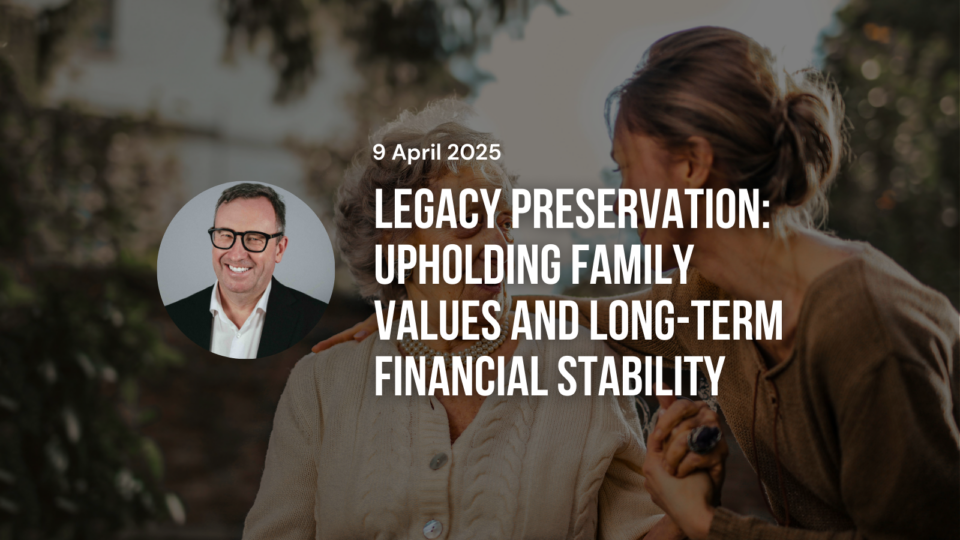

By Sharesight | Thursday, 19 September
In Australia, when you sell shares and other listed securities for a price higher than you paid, the profit or capital gain may be subject to a capital gains tax (CGT). CGT is common globally, but Australia’s implementation is considered one of the world’s most complex, and the nuance in this regulation can have significant implications at tax time. It’s important to understand how your trading activity during the financial year will impact your tax return at the end of the financial year. To learn more about CGT and how you can automatically calculate your CGT with Sharesight, keep reading.
What is capital gains tax (CGT)?
If you sell an investment for more than the cost to acquire it, you have realised a capital gain. This will need to be reported in your annual income tax return. Although it’s referred to as capital gains tax (CGT), this is actually part of the income tax regime and not a separate tax.
Because capital gains are added to assessable income and are taxed at the marginal income tax rate, this may increase your tax and can significantly reduce the net return you earn from the sale of your asset/s. As tax is not withheld for capital gains like it is for PAYG employee income, it is a good idea to work out how much you are likely to owe on an ongoing basis, and set aside sufficient funds to cover this.
While you need to include all capital gains in your tax return for the year you sell the shares, a discount applies for longer-term investments. Investments held for more than 12 months are only taxed on half of the capital gain. This is known as the capital gains tax (CGT) discount. You must also be mindful that capital gains can be offset against capital losses when calculating CGT, with investors sometimes adopting what is known as tax loss selling in order to net out their capital gains where practical.
CGT events affecting shares
Generally you have to pay tax on any capital gain you make on shares when a CGT event occurs, most commonly when you choose to sell shares you own. However, a CGT event is also triggered when the change of ownership of an investment is involuntary.
One example is when a company in which you hold shares is acquired by, or merges with another company. This may result in a capital gain or loss. A CGT event may also occur when an investor:
- Switches units in a managed fund to another fund
- Receives a distribution (other than a dividend) from a unit trust or managed fund
- Receives non-assessable payments from a company
- Owns shares in a company that has been placed in liquidation or administration.
Calculating the cost base of investments for CGT in Australia
When selling part of a shareholding where you have bought multiple parcels over time at different prices, several factors need to be considered. For example, you will need to be able to identify and nominate exactly when the shares of the holding you’ve sold were purchased to determine the cost base, as this will affect the realised capital gain or loss and any CGT discount that applies. The cost base of a CGT asset is generally the cost when bought by the investor, plus certain other costs associated with acquiring, holding and disposing of the asset.
Note: If you cannot identify when a bundle of shares were purchased, the ATO allows for a “first in, first out” (FIFO) method and average cost method in certain circumstances.
ATO methods to calculate capital gains
There are potentially three methods by which you can calculate your capital gains tax. Note: It helps to be organised and have an exact record of when each shareholding was bought or sold.
Here’s how the three methods may be applied:
CGT discount method: Generally, you must adopt the CGT discount method for investments held for more than 12 months, and the other methods for investments held for less than 12 months. As an individual investor, you can get a 50% discount on your capital gains — once capital losses have been added – if you owned your share holdings for more than 12 months before selling them.
Indexation method: This method is available to you if your shares were acquired before 21 September 1999 and you have owned them for 12 months or more before a CGT event. The indexation factor is worked out using the consumer price index (CPI) as a multiplier to account for inflation. This may be an option if you are carrying forward any capital losses for assets held before September 1999.
Other method: The ‘other’ method is the simplest of the three methods for calculating a capital gain. This method is applied if investors have held shares for less than 12 months before the CGT event. This method is applied by subtracting the cost base from the capital proceeds, with the remainder being the capital gain (or loss).
Calculate your CGT with Sharesight
Manually calculating the CGT on your investment portfolio can quickly become complex and subject to error. If you’re looking for an easy way to calculate your CGT, you’ve come to the right place. Sharesight’s award-winning investment portfolio tracker includes a powerful Australian capital gains tax report that functions as a CGT calculator, determining capital gains made on sold shares as per Australian Tax Office (ATO) rules.
You may run the report over any period to see:
- The CGT position for all your holdings sold within the period
- Your CGT gains broken up into short and long term, as well as your losses
- A summary of the short and long-term gains and losses, as well as any capital gain or claimable loss.

Designed for Australian tax requirements
The capital gains tax report uses the ‘discount method‘ for shares that have been held for more than a year and the ‘other method’ for shares held for less than a year. The discount rate is based on the Australian tax settings you select when setting up your portfolio:
- Individuals / Trust – CGT discount of 50 %
- Self Managed Super Fund – CGT discount of 33⅓ %
- Company – CGT discount of nil.
Change your sale allocation methods
The capital gains tax report also allows you to specify the sale allocation method at the overall portfolio and individual holding level to determine your optimal position, including:
- First In, First Out (FIFO) – Sharesight assumes that you sell your longest held shares first
- Last In, First Out (LIFO) – Sharesight assumes that you sell your most recently purchased shares first
- Minimise Gain – Sharesight assumes that you sell shares with the highest purchase price first
- Maximise Gain – Sharesight assumes that you sell shares with the lowest purchase price first
- Minimise CGT – Sharesight assumes that you sell shares that will result in the lowest capital gains tax first. This method is more sophisticated than the ‘Minimise capital gain’ method because it takes into account the Australian CGT discounting rules.
The sale allocation method can be changed for specific holdings or for the entire portfolio:

Share the report with an accountant
The ability to download the report into an Excel spreadsheet, PDF or Google Sheet makes it easy to share this report with your accountant – potentially helping you save time and money at tax time. You may also wish to securely share your full Sharesight portfolio with your accountant, which will give them real-time access to the portfolio, with the ability to see holdings, dividends, corporate actions and any trades that are made.
If you’re looking for more information on how to use Sharesight’s capital gains tax report, see our Help page or view our video walkthrough here.
This article is brought to you by Sharesight, a proud partner of the Australian Shareholders’ Association.





